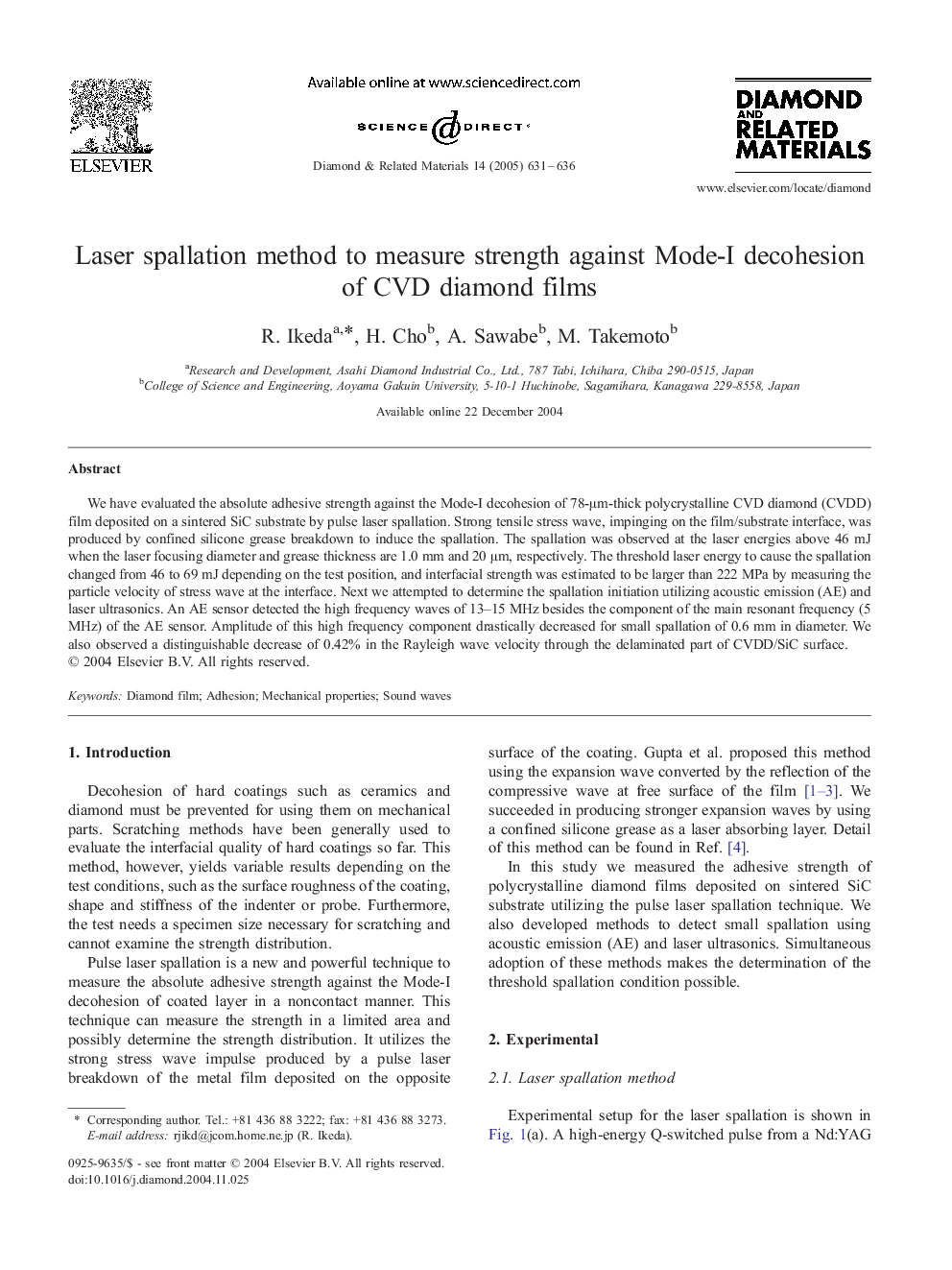| Article ID | Journal | Published Year | Pages | File Type |
|---|---|---|---|---|
| 9697452 | Diamond and Related Materials | 2005 | 6 Pages |
Abstract
We have evaluated the absolute adhesive strength against the Mode-I decohesion of 78-μm-thick polycrystalline CVD diamond (CVDD) film deposited on a sintered SiC substrate by pulse laser spallation. Strong tensile stress wave, impinging on the film/substrate interface, was produced by confined silicone grease breakdown to induce the spallation. The spallation was observed at the laser energies above 46 mJ when the laser focusing diameter and grease thickness are 1.0 mm and 20 μm, respectively. The threshold laser energy to cause the spallation changed from 46 to 69 mJ depending on the test position, and interfacial strength was estimated to be larger than 222 MPa by measuring the particle velocity of stress wave at the interface. Next we attempted to determine the spallation initiation utilizing acoustic emission (AE) and laser ultrasonics. An AE sensor detected the high frequency waves of 13-15 MHz besides the component of the main resonant frequency (5 MHz) of the AE sensor. Amplitude of this high frequency component drastically decreased for small spallation of 0.6 mm in diameter. We also observed a distinguishable decrease of 0.42% in the Rayleigh wave velocity through the delaminated part of CVDD/SiC surface.
Related Topics
Physical Sciences and Engineering
Engineering
Electrical and Electronic Engineering
Authors
R. Ikeda, H. Cho, A. Sawabe, M. Takemoto,
